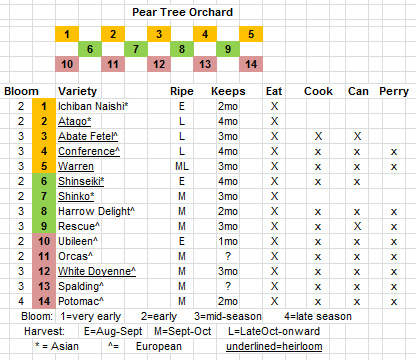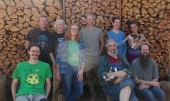
 2
2




 2
2








greg mosser wrote:what about them are you looking to know? and what in particular are you hoping to pollinate with them? i don’t have any at my place, so don’t know much about how well they pollinate other things, but there are a few trees around my area.
the pears themselves are okay eating but are generally considered a pretty low-grade pear. they tend towards having more ‘sand cells’ than any other pear i know, never lose their crunch, so they never get that ‘melting’ pear flesh from the better european pears in their ancestry, and while somewhat sweet, don’t have much of the more complex flavors of the asian pears in their ancestry. a friend likes to press them as if for cider, and then boil that down to a syrup, which makes a pretty nice pancake-syrup like product. trying that with other pears concentrates the flavors to the point that they get unpleasant, since tannins and acids (when mixed with the sugars) are what make most good pears taste so good. kieffer is a bland enough pear that it works.
 2
2








greg mosser wrote:all the kieffer trees i know around here don’t have any other pears around and reliably produce.








Nick Neufeld wrote:This page suggests having two other varieties for pollination.
https://plants.ces.ncsu.edu/plants/pyrus-communis-kieffer/
It also notes that it's a late blooming flower. I suggest looking for two other late blooming varieties that work in your growing context.
 1
1




 4
4




 ), it didn't have any fire blight, and just had a little codling moth damage (probably my fault).
), it didn't have any fire blight, and just had a little codling moth damage (probably my fault).




Striving to grow things as naturally, simply, and cheaply as possible! 
My YouTube channel
 1
1





| I agree. Here's the link: http://stoves2.com |








